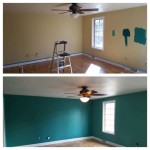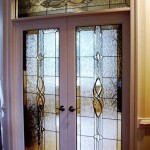Types of Lighting in Interior Design
Lighting is a fundamental element in interior design, influencing not only the visibility within a space but also impacting the ambiance, mood, and overall aesthetic appeal. Selecting the appropriate types of lighting is crucial for creating functional and visually pleasing environments. Effective lighting design considers the activities that will occur within the space, the architectural features to be highlighted, and the desired emotional response from occupants. Understanding the various types of lighting available allows designers to strategically layer light and achieve optimal results.
Different lighting types serve distinct purposes, and a well-designed interior typically incorporates a combination of these to achieve a balanced and harmonious effect. The primary categories of lighting in interior design include ambient lighting, task lighting, and accent lighting. Each category has its own characteristics and contributes uniquely to the overall lighting scheme. Furthermore, advancements in lighting technology, such as LED and smart lighting systems, have broadened the possibilities for creative and energy-efficient lighting solutions.
Ambient Lighting: Setting the Foundation
Ambient lighting, also known as general lighting, provides overall illumination to a space. Its main purpose is to ensure that the entire room is adequately lit, allowing individuals to move around safely and comfortably. Ambient lighting creates a foundation upon which other lighting layers can be built. It is essential to consider the size and shape of the room when determining the appropriate level of ambient light needed. Too little ambient light can make a space feel dark and unwelcoming, while too much can create harsh glare and discomfort.
Common sources of ambient lighting include ceiling fixtures, such as chandeliers, pendant lights, and recessed lighting. Wall-mounted sconces and floor lamps can also contribute to ambient lighting, particularly in larger spaces. Diffused light sources are often preferred for ambient lighting, as they distribute light evenly and minimize shadows. Dimmers can be incorporated to allow for adjustments in the ambient light level, providing flexibility for different activities and times of day. Natural light, another vital component of ambient lighting, should be maximized through the strategic placement of windows and skylights. Optimizing natural light not only reduces the need for artificial lighting but also enhances the overall well-being of occupants.
When planning ambient lighting, designers must consider the color temperature of the light source. Warmer color temperatures (e.g., 2700K-3000K) create a cozy and inviting atmosphere, while cooler color temperatures (e.g., 4000K-5000K) provide a brighter and more energizing effect. The choice of color temperature should be aligned with the intended use of the space and the desired aesthetic. For example, a living room might benefit from warmer ambient lighting, while a kitchen might require cooler lighting for improved visibility during food preparation.
Task Lighting: Functionality and Precision
Task lighting is designed to provide focused illumination for specific activities or tasks. It is essential for areas where detailed work is performed, such as reading, cooking, or studying. Effective task lighting reduces eye strain and improves accuracy by providing sufficient light on the work surface. The placement and intensity of task lighting should be carefully considered to avoid shadows and glare. The goal is to create comfortable and efficient working conditions.
Examples of task lighting include desk lamps, under-cabinet lighting, and adjustable floor lamps. Desk lamps are commonly used in home offices and study areas, providing direct light for reading and writing. Under-cabinet lighting is essential in kitchens for illuminating countertops during food preparation. Adjustable floor lamps offer flexibility and can be positioned to provide targeted light for reading or other activities. In bathrooms, vanity lighting is considered task lighting, as it provides illumination for grooming and applying makeup. The key is to position the light sources to minimize shadows on the face.
The design of task lighting should be functional and aesthetically pleasing. The style of the fixture should complement the overall design scheme of the room. Adjustable features, such as swivel heads and dimmers, enhance the versatility of task lighting. The color temperature of task lighting is also important, with cooler color temperatures often preferred for tasks that require focus and concentration. However, personal preference should also be taken into account, as some individuals may find warmer color temperatures more comfortable for certain tasks.
Accent Lighting: Highlighting and Drama
Accent lighting, also known as highlighting, is used to draw attention to specific objects or areas within a space. Its primary purpose is to create visual interest, add depth, and emphasize architectural features, artwork, or decorative elements. Accent lighting can transform a room by creating focal points and adding drama. It is typically three times brighter than the surrounding ambient lighting to effectively highlight the desired object or area.
Common types of accent lighting include spotlights, track lighting, and wall-mounted picture lights. Spotlights are ideal for highlighting artwork, sculptures, or architectural details. Track lighting offers flexibility and can be adjusted to direct light onto multiple objects. Wall-mounted picture lights are designed specifically for illuminating artwork, providing a focused and even distribution of light. In gardens and outdoor spaces, landscape lighting can be used as accent lighting to highlight plants, trees, or water features.
The selection of accent lighting fixtures should complement the style of the space and the objects being highlighted. The beam angle of the light source is an important consideration, as it determines the area that will be illuminated. Narrow beam angles are suitable for highlighting small objects, while wider beam angles are better for illuminating larger areas. The color rendering index (CRI) of the light source is also important, as it affects how accurately colors are perceived. A high CRI is desirable for accent lighting, as it ensures that the colors of the highlighted objects appear vibrant and true to life.
Additional Lighting Considerations
Beyond the three primary types of lighting, several other factors contribute to a well-designed lighting scheme. These include lighting controls, energy efficiency, and safety considerations. Lighting controls, such as dimmers and smart lighting systems, provide flexibility and allow for adjustments in the lighting level to suit different activities and moods. Dimmers can be used to create a relaxing atmosphere in the evening or to increase the light level for tasks that require more illumination. Smart lighting systems offer advanced features, such as remote control, scheduling, and integration with other smart home devices.
Energy efficiency is an increasingly important consideration in lighting design. LED lighting has become the standard for energy-efficient lighting, offering significant savings in energy consumption and longer lifespan compared to traditional incandescent or halogen bulbs. LED lighting is available in a wide range of color temperatures and brightness levels, making it suitable for various applications. In addition to using energy-efficient light sources, designers can also incorporate daylight harvesting strategies to reduce the need for artificial lighting. Daylight harvesting involves using sensors to detect the amount of natural light available and automatically adjusting the artificial lighting levels accordingly.
Safety is paramount in lighting design. Proper wiring and installation are essential to prevent electrical hazards. Light fixtures should be installed in accordance with local building codes and regulations. In damp or wet locations, such as bathrooms and outdoor areas, fixtures rated for wet locations should be used. Emergency lighting should also be considered, particularly in commercial buildings, to ensure that occupants can safely evacuate in the event of a power outage. Emergency lighting systems typically consist of battery-powered lights that automatically activate when the power goes out.
The integration of lighting into the overall design concept is crucial. The style, finish, and size of the lighting fixtures should complement the architectural features and décor of the space. The placement of lighting fixtures should be carefully considered to avoid glare and shadows. Collaboration between interior designers, architects, and lighting consultants is often necessary to achieve optimal results. A holistic approach to lighting design ensures that the lighting scheme is both functional and aesthetically pleasing, enhancing the overall experience of the space.
Ultimately, effective lighting design is a balance of art and science. It requires an understanding of the principles of light, the properties of different light sources, and the needs of the occupants. By carefully considering the different types of lighting and their applications, designers can create spaces that are not only visually appealing but also functional, comfortable, and safe.

8 Types Of Lighting For Your Home Interiors

Ppt The Power Of Lighting Illuminating Your Home S Design Potential Powerpoint Presentation Id 12589727

Interior Lighting Themes For Powerpoint Construction Templates

Lights In Interior Designing Lighting Design Best

Interior Design Project Proposal Powerpoint Presentation Slides Graphics Example Slide Templates

Basic Of Interior Home Lighting Design

How To Create A Professional Interior Design Presentation In 6 Steps Cedreo

Lightco Author At

Ppt Energy Saving Light Bulbs Powerpoint Presentation Free Id 4536136
Related Posts








